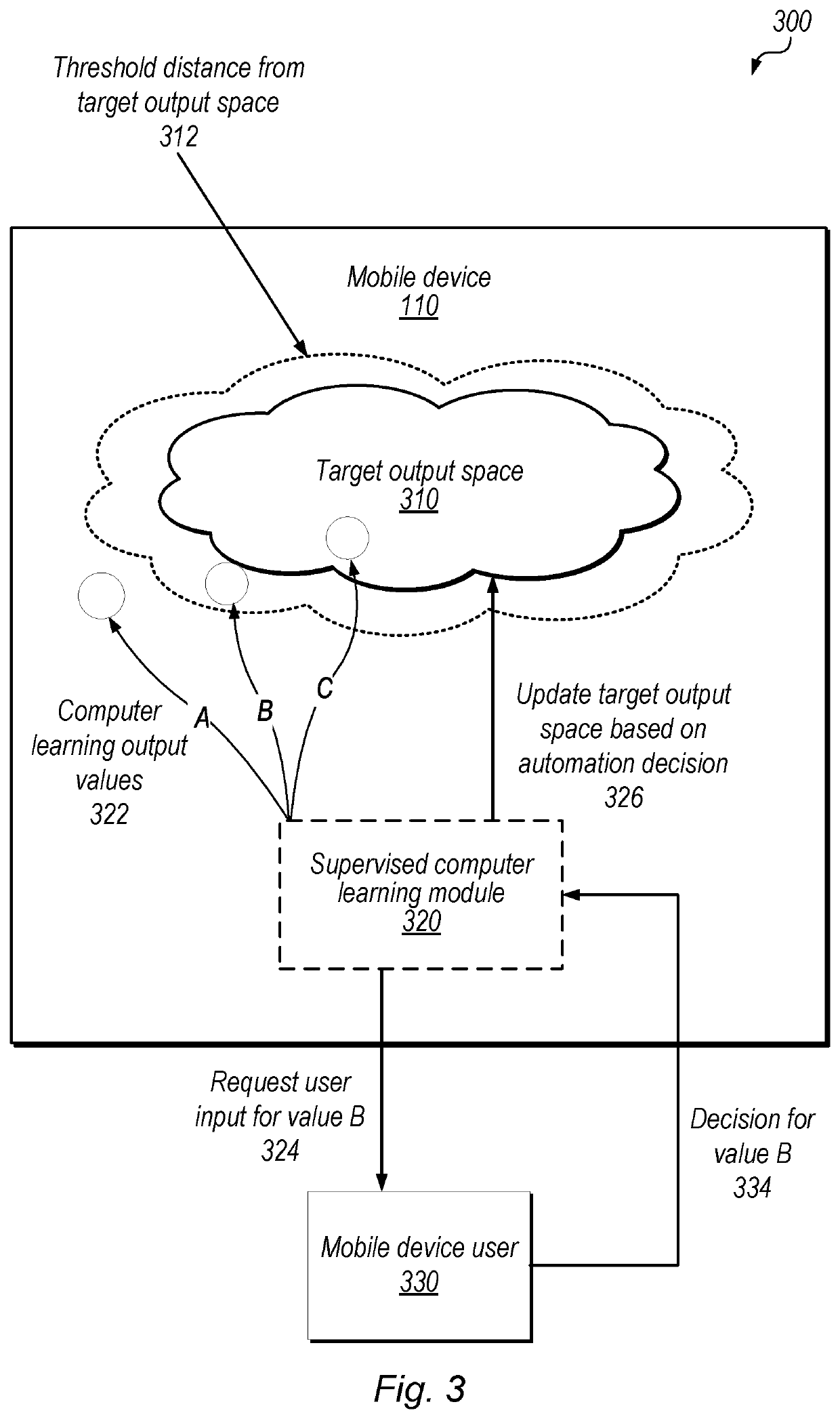Automating responses to authentication requests using unsupervised computer learning techniques
a technology of unsupervised computer learning and authentication requests, applied in the field of multi-factor authentication, can solve problems such as ongoing security of user information in accessing private accounts or services
- Summary
- Abstract
- Description
- Claims
- Application Information
AI Technical Summary
Benefits of technology
Problems solved by technology
Method used
Image
Examples
example authentication
[0013]FIGS. 1A and 1B are diagrams illustrating exemplary communication between a mobile device and an authentication server in a multi-factor authentication procedure involving automated authentication decisions based on an unsupervised computer learning process, according to some embodiments. In the illustrated embodiment, system 100 includes mobile device 110, authentication server 120 and devices 130.
[0014]In FIG. 1A, mobile device 110 receives user input 140 and environment input(s) 150. The user input 140 received by the mobile device 110 may include but is not limited to one or more of the following: application activity, short message service (SMS) messaging activity, frequency of login, unlock information (e.g., a passcode, biometric information, etc.), and / or other personally identifiable information (PII). Environmental input may include, but is not limited to one or more of the following: time of day, proximity to other devices, biometric information from a wearabl...
example parameters
[0023]FIG. 2 is a block diagram illustrating exemplary input parameters to a mobile device from multiple different sources, including environmental parameters and parameters already stored on the mobile device, according to some embodiments. In the illustrated embodiment, mobile device 110 receives user input 140 and information from wearable device 220, other mobile device 230, vehicle 240, and personal computer 250.
[0024]Mobile device 110, in the illustrated embodiment, stores values for the following parameters: time of day 214, frequency of login 216, and personally identifiable information (PII) 218. In some embodiments, time of day 214 is received in one or more formats (e.g., a different time zone depending on location, 24-hour time, coordinated universal time (UTC), etc.). In some embodiments, frequency of login 216 information includes the number of times the mobile device user logs into: the mobile device, one or more applications, one or more accounts, one or more service...
PUM
 Login to View More
Login to View More Abstract
Description
Claims
Application Information
 Login to View More
Login to View More - R&D
- Intellectual Property
- Life Sciences
- Materials
- Tech Scout
- Unparalleled Data Quality
- Higher Quality Content
- 60% Fewer Hallucinations
Browse by: Latest US Patents, China's latest patents, Technical Efficacy Thesaurus, Application Domain, Technology Topic, Popular Technical Reports.
© 2025 PatSnap. All rights reserved.Legal|Privacy policy|Modern Slavery Act Transparency Statement|Sitemap|About US| Contact US: help@patsnap.com



